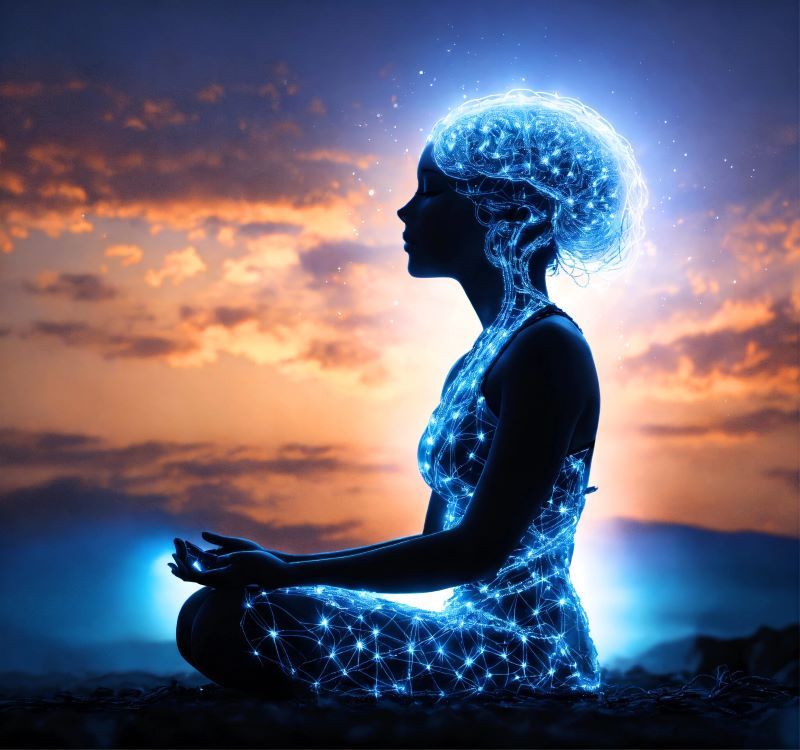

Understanding Acupressure
Understanding Acupressure
Introduction
While treating countless patients, I have come to a realization that many people in India, do not truly understand acupressure or acupuncture. There's a general lack of awareness, and often, misinformation surrounds these age-old healing sciences. Even my close relatives occasionally ask, "Can you just tell me the acupressure point for a headache or acidity or diabetes? I will press it myself."
This reflects a fundamental misunderstanding of how acupressure and acupuncture work. These aren’t quick fixes. They are scientific, therapeutic systems rooted in deep knowledge of the human body, meridians (energy pathways), and holistic healing.
Myth: "Tell Me the Point, I Will Do It Myself"
Let us bust this myth. Many assume that for every health problem there exists a single magical point on the body that one can press and experience instant relief or cure. This is as misleading as assuming one pill will cure all illnesses, regardless of the root cause.
Acupressure and acupuncture are not button-pushing games. They are rooted in Traditional Hindu Culture and Chinese Medicine (TCM) and, in our online video consultation “LiveCure," further supported by Ayurveda and modern anatomical understanding. The process involves more than just pressing a point; it involves:
Diagnosis based on symptoms:
Diagnosis is based on a holistic understanding of the body’s systems, guided by ancient principles such as Yin-Yang balance, Qi (vital energy) flow, and the Five Elements theory. TCM practitioners use symptom patterns (also called syndrome differentiation or 辨证论治) to determine the root cause of disease, rather than focusing solely on individual symptoms.
Here is an outline of how TCM diagnosis is typically conducted based on symptoms:
🧭 Four Diagnostic Methods
- Looking – Observing the tongue, complexion, demeanor, and overall appearance.
- Listening and Smelling – Voice quality, breathing, body odor.
- Asking – A thorough interview about symptoms, sleep, emotions, diet, menstrual cycle (for women), etc.
- Touching – Primarily the pulse diagnosis, along with palpation of specific areas or meridians.
🩺 Common Symptom-Based Patterns in TCM
Below is a simplified table showing how some common symptoms are interpreted under TCM:
| Symptom | Possible TCM Diagnosis / Pattern | Notes |
| Fatigue + Pale face + Cold limbs | Spleen Qi Deficiency or Yang Deficiency | Often includes poor digestion, loose stools, weak pulse |
| Insomnia + Anxiety + Palpitations | Heart Yin Deficiency or Liver Qi Stagnation | Tongue may be red with little coating; pulse may be thin or wiry |
| Headache + Irritability | Liver Yang Rising or Liver Fire | Often with red eyes, bitter taste, dry mouth |
| Digestive issues + Bloating | Spleen Qi Deficiency or Damp Accumulation | Heaviness, foggy thinking, swollen tongue with teeth marks |
| Cold hands and feet + Cramps | Blood Deficiency or Cold in the Channels | Often seen in women; worse during menstruation or cold weather |
| Shortness of breath + Weak voice | Lung Qi Deficiency | May also show spontaneous sweating and frequent colds |
| Dry cough + Night sweats | Lung Yin Deficiency | Often post-viral or chronic conditions |
| Irregular periods + PMS | Liver Qi Stagnation | Mood swings, breast tenderness, wiry pulse |
| Sharp pain + Fixed location | Blood Stasis | Purple tongue or clots in menses; stabbing pain |
| Nausea + Heavy limbs | Damp-Heat in the Middle Jiao |
Greasy tongue coating, foul taste, abdominal discomfort |
🔍 Example Case
Symptom Set:
- Tiredness after eating
- Bloating
- Loose stools
- Pale tongue with teeth marks
- Weak pulse
TCM Diagnosis:
👉 Likely Spleen Qi Deficiency
Treatment focus: Tonify spleen, strengthen Qi, regulate digestion (e.g., with herbs like Bai Zhu, Dang Shen; acupuncture points like ST36, SP6)
🧑⚕️ Final Note
TCM diagnosis is highly personalized and context-dependent. The same symptom in different people might indicate different patterns. For an accurate diagnosis, a practitioner typically needs:
- Full history
- Tongue photo
- Pulse check
- Lifestyle review
Understanding lifestyle and habits: In Traditional Chinese Medicine (TCM), lifestyle and habits are considered fundamental to maintaining health and preventing disease. Understanding these factors involves looking at daily behaviors, emotions, diet, sleep, and environment through the lens of TCM’s core principles like Qi (energy flow), Yin-Yang balance, and the Five Elements. Here's a breakdown:
1. Diet and Eating Habits
TCM views food as medicine. The quality, temperature, and timing of food intake are all critical:
- Warm, cooked foods are generally preferred over cold or raw foods, which can weaken digestion (Spleen Qi).
- Overeating, irregular eating, or eating under stress disrupts the Spleen and Stomach, impairing digestion and energy production.
- Foods are chosen according to season, body constitution, and imbalances (e.g., cooling foods for excess heat).
2. Sleep Patterns
Sleep is essential for restoring Yin energy. Poor sleep can lead to:
- Heart or Liver imbalances (e.g., overthinking affects the Heart Shen/mind).
- Disrupted Qi and Blood flow, resulting in fatigue, mood swings, or hormonal issues.
- TCM recommends sleeping before 11 PM to align with the natural flow of organ clocks, particularly the Gallbladder and Liver.
3. Emotional Habits
TCM recognizes emotions as internal causes of disease:
- Anger affects the Liver, worry impacts the Spleen, fear damages the Kidneys, and sadness/grief weaken the Lungs.
- Chronic or suppressed emotions lead to Qi stagnation, organ disharmony, or depletion of vital essence (Jing).
- Mind-body practices like Qigong, Tai Chi, meditation, and acupuncture help regulate emotions.
4. Physical Activity
Moderate, regular movement supports Qi and Blood circulation:
- Too much exercise depletes Qi and Jing (especially Kidney energy).
- Too little movement causes Qi stagnation, leading to pain or emotional disturbances.
- TCM encourages balance — gentle, restorative exercises are often preferred, especially for deficient or elderly individuals.
5. Work and Stress
Overwork or lack of rest weakens the Spleen and Kidneys:
- Long hours, mental exhaustion, and inadequate recovery deplete Qi, affect Blood production, and disturb sleep.
- Chronic stress often leads to Liver Qi stagnation, manifesting as headaches, menstrual issues, or digestive trouble.
6. Environmental and Seasonal Influence
TCM stresses adapting lifestyle to seasons:
- In winter, conserve energy (Kidney season); eat warming foods and rest more.
- In summer, focus on cooling, light foods and staying hydrated.
- Wind, cold, dampness, and heat are seen as external pathogenic factors — proper clothing, diet, and home environment are key in prevention.
7. Personal Constitution
Each person has a unique TCM body type (e.g., Yang-deficient, Damp-Heat, Qi-stagnation, etc.), which influences lifestyle advice:
- A Yin-deficient person should avoid spicy, drying foods and late nights.
- A person with Dampness should reduce dairy, cold/raw foods, and increase movement.
Summary Table
| Lifestyle Aspect | TCM Perspective | Possible Imbalance |
| Diet | Food as medicine; warm & seasonal | Spleen Qi deficiency, Dampness |
| Sleep | Rest restores Yin and Shen | Insomnia, Heart/Liver disharmony |
| Emotions | Linked to organ health | Qi stagnation, Blood deficiency |
| Exercise | Move Qi, avoid extremes | Qi stagnation, Jing depletion |
| Work & Stress | Balance effort & rest | Kidney exhaustion, Liver Qi stagnation |
| Environment | Seasonal alignment | External invasion (Wind, Cold, Damp) |
| Constitution | Individualized care | Aggravation of inherent imbalances |
Tailoring treatment to the individual's body constitution
In Traditional Chinese Medicine (TCM), tailoring treatment to an individual's body constitution is a foundational principle. TCM recognizes that every person has a unique combination of physical, emotional, and energetic characteristics known as their constitution (体质, tǐ zhì). Understanding this constitution allows practitioners to create personalized treatment plans that are more effective and sustainable.
🔍 What is Body Constitution in TCM?
A body constitution reflects the innate and acquired characteristics of an individual's body and mind. These include:
- Inherited traits (genetics)
- Lifestyle and diet
- Emotional patterns
- Environmental exposures
- Past illnesses and medical history
🔑 Nine Common Body Constitution Types (as per TCM theory)
- Balanced (Ping He) – Ideal state of health and harmony.
- Qi Deficiency – Fatigue, low immunity, breathlessness.
- Yang Deficiency – Cold intolerance, low energy, loose stools.
- Yin Deficiency – Night sweats, dry mouth, irritability.
- Phlegm-Dampness – Obesity, heaviness, greasy tongue coating.
- Damp-Heat – Greasy skin, bitter taste in mouth, irritability.
- Blood Stasis – Sharp pain, dark complexion, clots in menstruation.
- Qi Stagnation – Emotional tension, mood swings, sighing.
- Special Constitution – Allergies, sensitivity to foods, meds, or environment.
🧬 How Practitioners Determine Constitution
- Tongue diagnosis (color, shape, coating)
- Pulse diagnosis (speed, depth, strength)
- Observation (complexion, voice, posture)
- Questioning (sleep, appetite, energy, emotions)
- Palpation (pain points, temperature, texture)
🎯 Tailoring Treatments Based on Constitution
1. Herbal Medicine
- Yin-deficient: Rehmannia-based formulas
- Qi-deficient: Ginseng, astragalus
- Phlegm-damp: Pinellia, hoelen
2. Acupuncture
- Yang-deficiency: Moxibustion on Ren-4, Du-4
- Qi stagnation: Liver meridian points like LV-3
- Blood stasis: SP-10, UB-17 to move blood
3. Diet Therapy
- Yin-deficiency: Cooling foods like pears, tofu
- Yang-deficiency: Warming foods like lamb, cinnamon
- Damp-heat: Avoid greasy, spicy foods; use mung beans and bitter melon
4. Lifestyle Recommendations
- Qi stagnation: Stress relief, tai chi, emotional expression
- Blood stasis: Regular movement, avoid cold exposure
- Balanced constitution: Maintenance of healthy habits
🌿 Benefits of Constitution-Based TCM
- Personalization: No one-size-fits-all. Treatments are crafted for the whole person.
- Preventive Care: Identifying imbalances before disease manifests.
- Sustainability: Helps maintain long-term health, not just treat symptoms.
- Holistic Approach: Addresses mental, physical, and emotional aspects.
🧘 Example Case: Yin Deficient Constitution
Symptoms: Dry mouth, irritability, hot flashes, thin body frame
Treatment Plan:
- Acupuncture: KI-3, SP-6, LU-9 to nourish Yin
- Herbs: Liu Wei Di Huang Wan
- Diet: Black sesame, tofu, barley
- Lifestyle: Meditation, avoid spicy foods, reduce stress
- Considering emotional and psychological state.
Basics That May Help
Yes, for very basic or common issues like minor headaches, stress, or indigestion, some general points may help offer temporary relief. But that is not curative; that is symptomatic management.
However, if the goal is to manage and cure complex or chronic illnesses such as:
- Asthma
- Weak Lungs
- Thyroid Dysfunction
- Emotional Imbalance
- Infertility
- Urinary Tract Infections (UTI)
- Palpitations and other Heart Conditions
- Anger and Anxiety
- Liver Malfunction
Then, the process must be handled professionally. Professionally means therapist who knows about basic of medical science and deep science of Acupressure points.
Scientific Diagnosis is the Key
When someone walks into our online video consultation at Livecure, we don’t just look at their symptoms. We look at their entire life.
- What is their lifestyle like?
- What do they eat?
- How do they sleep?
- What is their stress level?
- Are there any emotional traumas?
- Is there a family history of illness?
Only then can we determine what energies are blocked or imbalanced, and what points need stimulation.
Acupressure is NOT Random Pressing
Many YouTube videos and internet content promote the idea that one can randomly press points at home. While this is not entirely harmful for common ailments, it doesn’t work for serious conditions.
In our online video consultation approach, we consider:
- Direction of pressure (inward/outward/circular)
- Duration (few seconds to minutes)
- Pressure strength (light, moderate, deep)
- Time of day (some points respond better in the morning/evening)
There is also the concept of diagnostic pressing. If a point is painful, it may indicate an issue in the corresponding organ, and we follow it with pulse reading and tongue diagnosis (from Ayurveda). These points are bio energy points which sends communication to brain to balance or recover the flow of our energy.
Importance of Diet in Acupressure-Based Healing
We believe that food is medicine. That’s why diet plays a crucial role in all our therapies. But this is not a one-size-fits-all diet plan. Based on Ayurvedic principles:
- We determine the individual’s Prakriti (body constitution)
- Identify Dosha imbalances (Vata, Pitta, Kapha)
- Recommend specific foods and avoid certain items
For example:
A Kapha-dominant person suffering from respiratory issues will benefit from warm, dry, and pungent foods.
A Vata-dominant patient with joint pains needs grounding and moist foods.
Importance of Diet in Acupressure-Based Healing in Traditional Chinese Medicine (TCM)
In Traditional Chinese Medicine (TCM), healing is seen as a holistic process that integrates the body, mind, and environment. Acupressure—using finger pressure on specific points along energy pathways (meridians)—is one powerful modality within TCM. But acupressure alone is not seen as sufficient for deep, long-term healing. Dietary therapy is considered equally vital and synergistic with acupressure in restoring and maintaining health.
1. Foundation of TCM: Balance and Qi Flow
At the core of TCM is the concept of Qi (vital energy) and Yin-Yang balance. Acupressure helps stimulate and regulate the flow of Qi along meridians, correcting blockages and deficiencies. However, Qi is also produced and nourished by the food we eat.
In TCM, food is not just fuel—it’s medicine.
What you consume influences your organ function, Qi production, blood nourishment, and fluid metabolism. Without proper diet, the benefits of acupressure may be temporary or less effective.
2. Diet as a Continuation of Acupressure Treatment
Each organ system in TCM (like the Liver, Spleen, Kidney, etc.) is linked with specific acupressure points and corresponding dietary needs. For example:
Spleen and Stomach are central to digestion and Qi production.
Acupressure Point: ST36 (Zusanli) boosts digestion and immunity.
Supporting Foods: Warm, cooked grains (like rice or oats), root vegetables, and moderate spices.
Liver governs emotional flow and blood storage.
Acupressure Point: LV3 (Taichong) helps with stress and hormonal balance.
Supporting Foods: Green leafy vegetables, dandelion, and sour fruits.
By aligning dietary changes with targeted acupressure, patients can experience more sustainable healing.
3. Temperature and Nature of Foods: Yin-Yang Considerations
TCM classifies foods by their energetic temperature (cold, cool, neutral, warm, hot) and flavor (sweet, sour, bitter, pungent, salty), each influencing specific organs and meridians.
Yin Deficiency (heat signs): Dry throat, night sweats, hot flashes.
Acupressure: Focus on nourishing Yin meridians.
Diet: Cooling foods like cucumber, watermelon, tofu, and pears.
Yang Deficiency (cold signs): Fatigue, cold limbs, low libido.
Acupressure: Tonify Yang pathways (e.g., Kidney and Spleen points).
Diet: Warming foods like ginger, lamb, cinnamon, and black sesame seeds.
4. Food Quality Affects Qi Quality
In TCM, the quality of Qi you generate is only as good as the quality of food you consume. Fresh, seasonal, and whole foods are emphasized over processed, chemical-laden, or excessively raw/cold items.
Acupressure may help unblock energy and reduce symptoms, but without quality nutrition, the body cannot generate sufficient Qi or Blood for full healing.
5. TCM Diagnosis Guides Dietary Strategy
A TCM practitioner often diagnoses patterns like "Spleen Qi Deficiency" or "Liver Qi Stagnation." Based on this, both acupressure points and dietary recommendations are customized.
| Diagnosis | Common Acupressure Points | Recommended Diet |
| Spleen Qi Deficiency | ST36, SP6 | Warm porridge, yams, pumpkin |
| Liver Qi Stagnation | LV3, GB34 | Mint, lemon, leafy greens |
| Kidney Yang Deficiency | KI3, BL23 | Bone broth, walnuts, lamb |
| Yin Deficiency | LU9, KI6 | Pears, tofu, seaweed |
6. Detoxification and Healing Crises
As acupressure activates internal healing, the body may release toxins or suppressed emotions. A balanced TCM diet supports gentle detoxification and prevents overload on organs like the liver and kidneys. Foods rich in antioxidants, mild herbs (like goji berries, chrysanthemum), and hydrating soups are often advised during healing phases.
7. Timing of Meals and Circadian Rhythms
TCM also aligns food intake with the organ clock (the 24-hour Qi cycle). For example:
7–9 AM (Stomach time): Ideal time for a hearty breakfast.
11 AM–1 PM (Heart time): Light, joyful meals.
5–7 PM (Kidney time): Warming, nourishing dinner.
Eating according to these rhythms enhances the benefits of both diet and acupressure.
8. Case Example: Acupressure + Diet in Chronic Pain
A patient with chronic back pain (Kidney and Liver meridian imbalance) receives regular acupressure on BL23, KI3, and LV3. Their diet is adjusted to include:
Kidney-supporting foods: Black beans, walnuts, bone broth.
Liver-soothing foods: Leafy greens, beets, chamomile tea.
After 4–6 weeks, the patient experiences not only reduced pain but improved energy, sleep, and emotional balance.
Conclusion
In TCM, acupressure and diet are two sides of the same healing coin. Acupressure unblocks the meridians and directs energy where needed, while diet provides the raw materials to build Qi, Blood, and Fluids. Integrating both leads to deeper, longer-lasting health improvements.
“Let food be thy medicine, and pressure be thy path.” — A TCM-inspired proverb
Use of Additional Therapies
At LiveCure, we sometimes integrate additional therapies with acupressure:
- Cupping Therapy - for muscle tension and toxin release
- Moxibustion - heat therapy to stimulate energy flow
- Ear Acupressure - microsystem therapy for full-body effects
- Auricular Therapy - particularly useful in emotional imbalances
- Foot Reflexology - helps in improving organ function and relaxation
Common Misunderstood Conditions We Treat
Let me walk you through some real scenarios:
1. Thyroid Disorders
Most people think thyroid problems can only be treated with lifelong medication. Through acupressure and diet, we help rebalance the body’s hormonal function.
2. Infertility
We have successfully supported couples where conventional methods failed. Acupressure works by stimulating reproductive organs, improving blood flow, and balancing hormones.
3. Cervical Spondylitis
One of the most common urban issues due to sedentary lifestyle. We provide a combination of point therapy, exercises, and ergonomic advice.
4. Post-Stroke Recovery
Acupressure can support neuro-rehabilitation by activating brain-related points and improving blood circulation to affected limbs.
5. Anxiety and Emotional Disorders
Mental health is physical health. By treating emotional blocks, we restore body balance, improve sleep, and reduce dependency on drugs.
LiveCure: A Holistic Healing Platform
We are proud to introduce LiveCure as a digital-first yet personal wellness platform that brings real healing into the lives of people, without side effects.
Here are the treatments we offer:
✅ Chronic Pain Management
✅ Cervical and Lumbar Pain
✅ Thyroid Management
✅ Menstrual and PCOS Management
✅ Acidity and IBS Treatment
✅ Migraine and Tension Headaches
✅ Weight Management
✅ Diabetes Support
✅ Liver Cleansing Protocols
Specialized Programs:
- Post-Stroke Home Recovery
- Corporate Wellness Programs
- Women Health Packages
- Online DIY Acupressure Sessions
Patient Experience
Our patients have reported:
- Better sleep within 3 sessions
- Relief from joint pains in 5-7 sessions
- Controlled sugar levels in 3-6 weeks
- Weight loss without crash diets
- Balanced mood and reduced emotional distress
Here is what one of our clients said:
"I used to suffer from palpitations and anxiety. I tried all tests and medications. At LiveCure, with simple acupressure sessions and daily food tips, my condition is 80% improved. I sleep better and feel alive again."
Conclusion: Time to Look Beyond Medication
Our bodies have amazing natural healing power. Acupressure is the key to unlocking that power. Instead of just managing symptoms, this approach targets root causes, balances energy flow, and promotes long-term wellness.
At LiveCure, we are not just treating illness—we are restoring balance, promoting vitality, and helping people reconnect with their body’s innate intelligence.
So next time you feel tempted to ask, "Just tell me the point to press," remember:
- Healing is a process
- Your body is unique
- Diagnosis is key
- Food is medicine
- Energy matters
Let us guide you in this journey.
Feel free to use images in our website by simply providing a source link to the page they are taken from.
-- LiveCure
Share views on Understanding Acupressure
Please keep your views respectful and not include any anchors, promotional content or obscene words in them. Such comments will be definitely removed and your IP be blocked for future purpose.
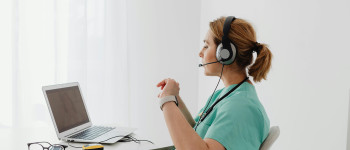 5th May 2025
5th May 2025
 9th Dec 2024
9th Dec 2024
 27th Sep 2025
27th Sep 2025
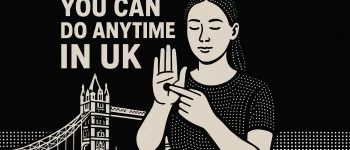 6th Sep 2025
6th Sep 2025
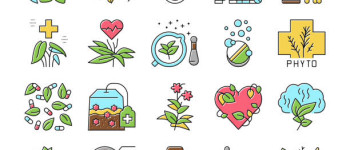 18th Jun 2025
18th Jun 2025
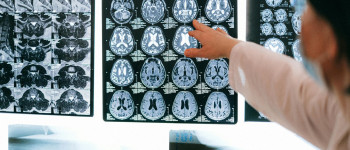 19th Dec 2024
19th Dec 2024
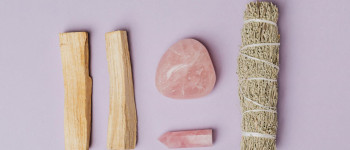 5th May 2025
5th May 2025
 10th Oct 2025
10th Oct 2025
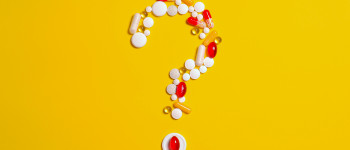 9th Oct 2025
9th Oct 2025
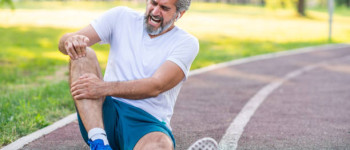 4th Jun 2025
4th Jun 2025
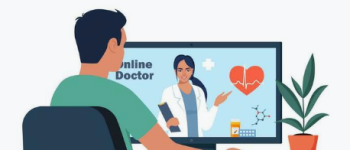 8th Sep 2025
8th Sep 2025
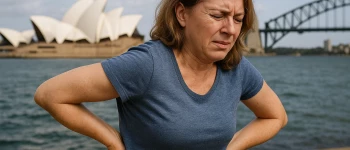 6th Sep 2025
6th Sep 2025
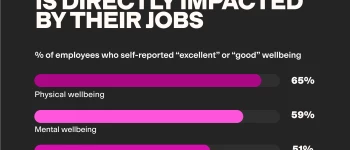 2nd May 2025
2nd May 2025